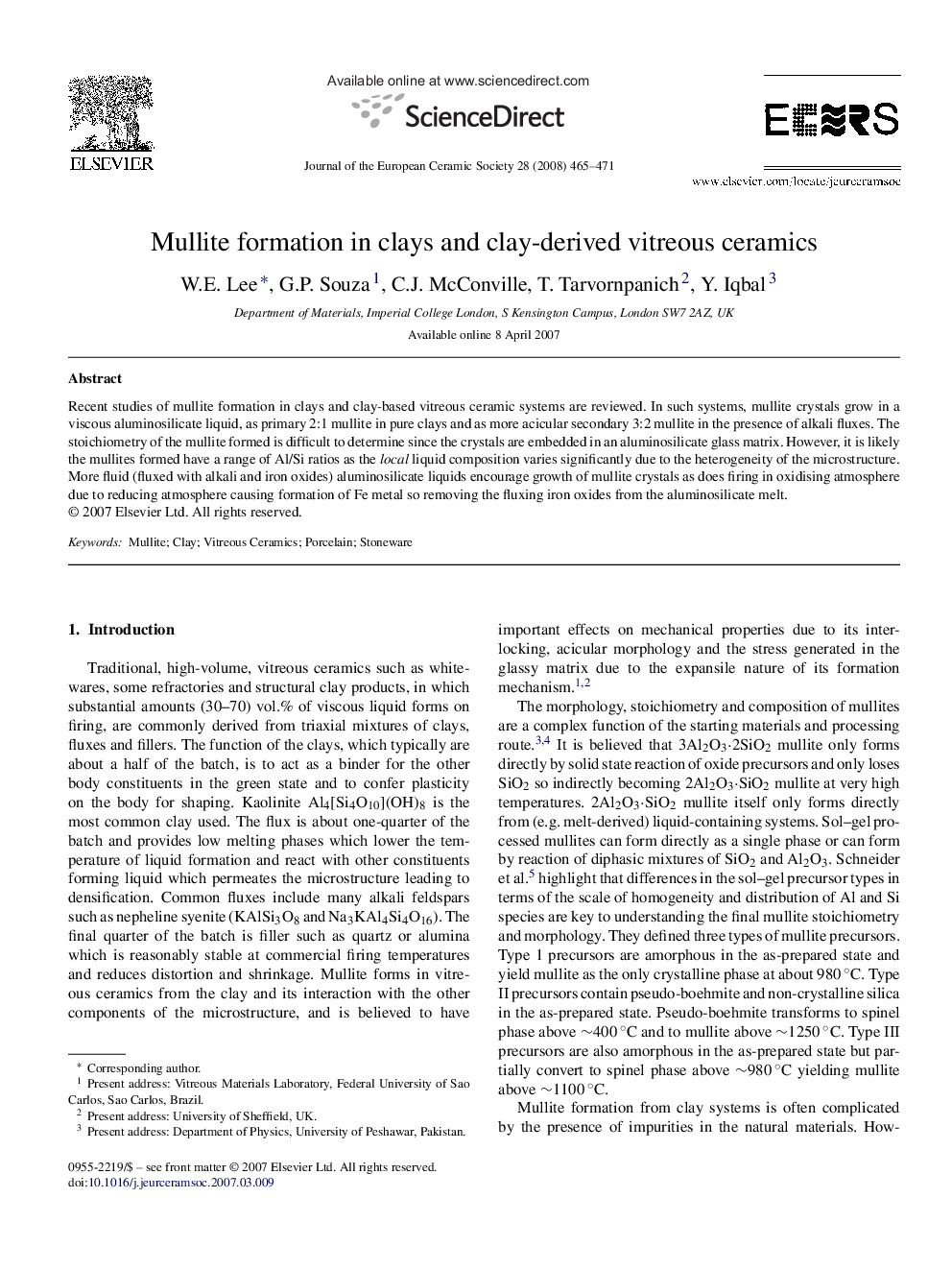| Article ID | Journal | Published Year | Pages | File Type |
|---|---|---|---|---|
| 1478063 | Journal of the European Ceramic Society | 2008 | 7 Pages |
Recent studies of mullite formation in clays and clay-based vitreous ceramic systems are reviewed. In such systems, mullite crystals grow in a viscous aluminosilicate liquid, as primary 2:1 mullite in pure clays and as more acicular secondary 3:2 mullite in the presence of alkali fluxes. The stoichiometry of the mullite formed is difficult to determine since the crystals are embedded in an aluminosilicate glass matrix. However, it is likely the mullites formed have a range of Al/Si ratios as the local liquid composition varies significantly due to the heterogeneity of the microstructure. More fluid (fluxed with alkali and iron oxides) aluminosilicate liquids encourage growth of mullite crystals as does firing in oxidising atmosphere due to reducing atmosphere causing formation of Fe metal so removing the fluxing iron oxides from the aluminosilicate melt.
